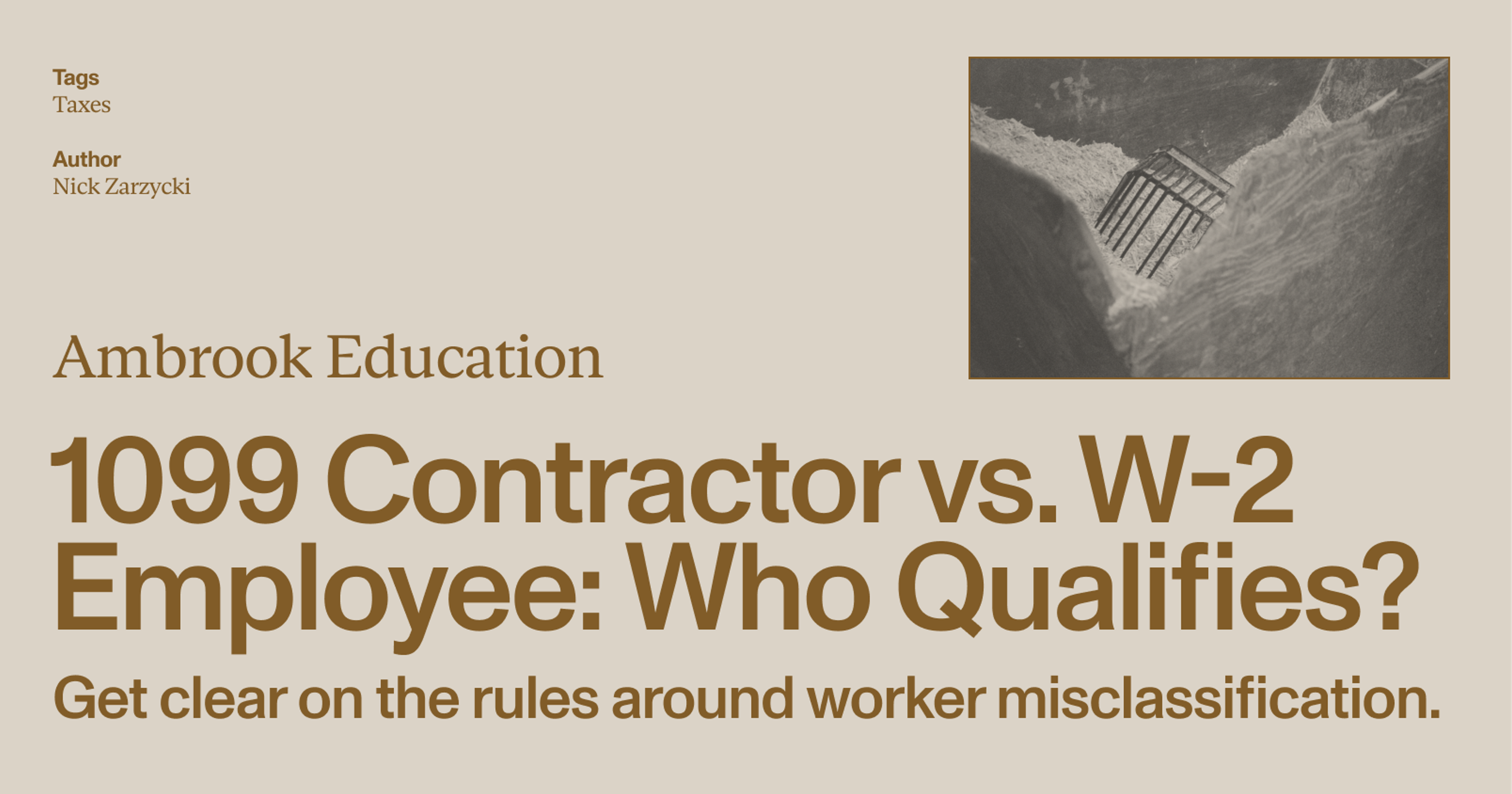Hiring independent contractors might be cheaper in the short term, but it also comes with some risks.
Hiring a new employee comes with many responsibilities: the employer has to file numerous tax forms, withhold payroll taxes on their paychecks, and pay into their worker’s compensation insurance, among other things.
Hiring someone as an independent contractor might be cheaper and involve less work, but it also comes with a risk. If the government finds that the employer ‘misclassified’ an employee as an independent contractor, they could be subject to steep fines, criminal penalties, and even legal action from the misclassified workers.
What’s the difference between an ‘employee’ and an ‘independent contractor?’
An employee – also sometimes called a “Form W-2” employee, named after the IRS form you’re required to file for each one – is a worker who contributes to the core business, usually at the primary place of business. Most importantly, they’re someone whose work the employer directs or controls in some way.
In addition to paying them wages, hiring a W-2 employee comes with a long list of employer responsibilities, including:
Adhering to state and federal labor laws
Filing a Form W-2, W-4, and I-9 for each one
Withholding payroll taxes from their paychecks
Contributing to their employee health and life insurance
Paying into their worker’s compensation insurance
Paying them stock options, benefits, bonuses, and/or severance
Matching their 401(k) contributions
An independent contractor – also sometimes called a “Form 1099” contractor – is different. Other than filing a Form 1099-NEC for each one the employer goes into business with, the independent contractor relationship comes with many fewer rules and stipulations.
At the same time, contractors are fundamentally different from employees. In the eyes of the government and the IRS, they’re self-employed individuals you go into business with, not employees whose hours you can set and work you can control.
What are the rules around worker misclassification?
Misclassification is what happens when an employer hires someone as an independent contractor and then treats that worker like a W-2 employee. The government takes misclassification seriously and will often penalize employers for engaging in it.
The Department of Labor, IRS, and state governments all have slightly different takes on what constitutes misclassification, but most of them boil down to one important factor: control.
Generally speaking, an employee is someone whose work the employer controls in some way, usually by setting their hours and dictating when and how they should do their work.
An independent contractor is exactly that: independent. They direct their own work in some way, usually on a project-to-project basis, for which they’re usually paid a lump sum. Contractors also often use their own equipment, determine how they do their work, and set their own hours.
How can I know for sure whether an employee has been misclassified?
Both employers and workers who are unclear about whether a worker is an employee or an independent contractor can file Form SS-8 to ask the IRS to answer that question for them.
To properly file SS-8, you’ll have to answer a series of questions about the worker’s relationship with the business – particularly how much behavioral and financial control that business has over the worker.
What are the penalties for misclassifying an employee?
There are numerous penalties for misclassifying an employee, including:
Up to $660 for every unfiled W-2 form
1.5% or 3.0% of the total amount of each misclassified employee’s wages
20% or 40% of each misclassified employee’s FICA taxes
100% of the employer’s portion of FICA
This doesn’t include any state penalties, and if an employer is found to have intentionally misclassified an employee, they could face more severe fines and criminal penalties. This also doesn’t include any legal action a misclassified employee takes against their employer.
Less paperwork, more real work
Ambrook’s powerful automation tools let you do your bookkeeping faster, file tax forms, track expenses and eliminate hours of repetitive administrative work.
If juggling regulatory forms and paperwork is holding you back, Ambrook can help cut through the busywork and get back to what’s important: running your business. Curious to learn more? Schedule a demo today.
Want to learn more about Ambrook?
This resource is provided for general informational purposes only. It does not constitute professional tax, legal, or accounting advice. The information may not apply to your specific situation. Please consult with a qualified tax professional regarding your individual circumstances before making any tax-related decisions.






